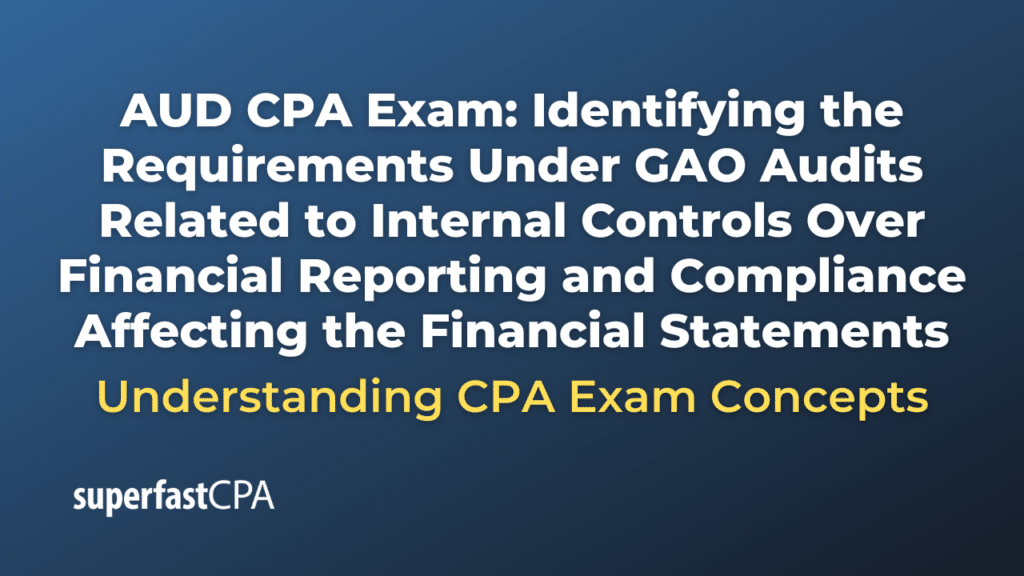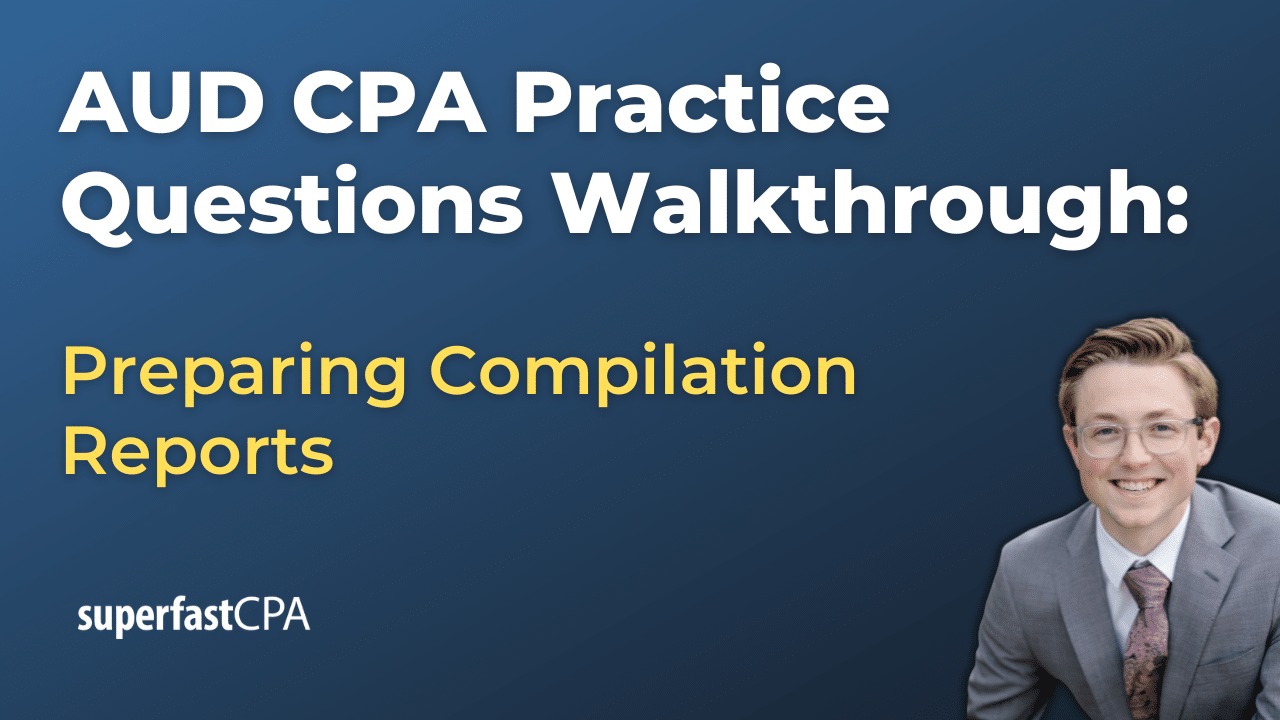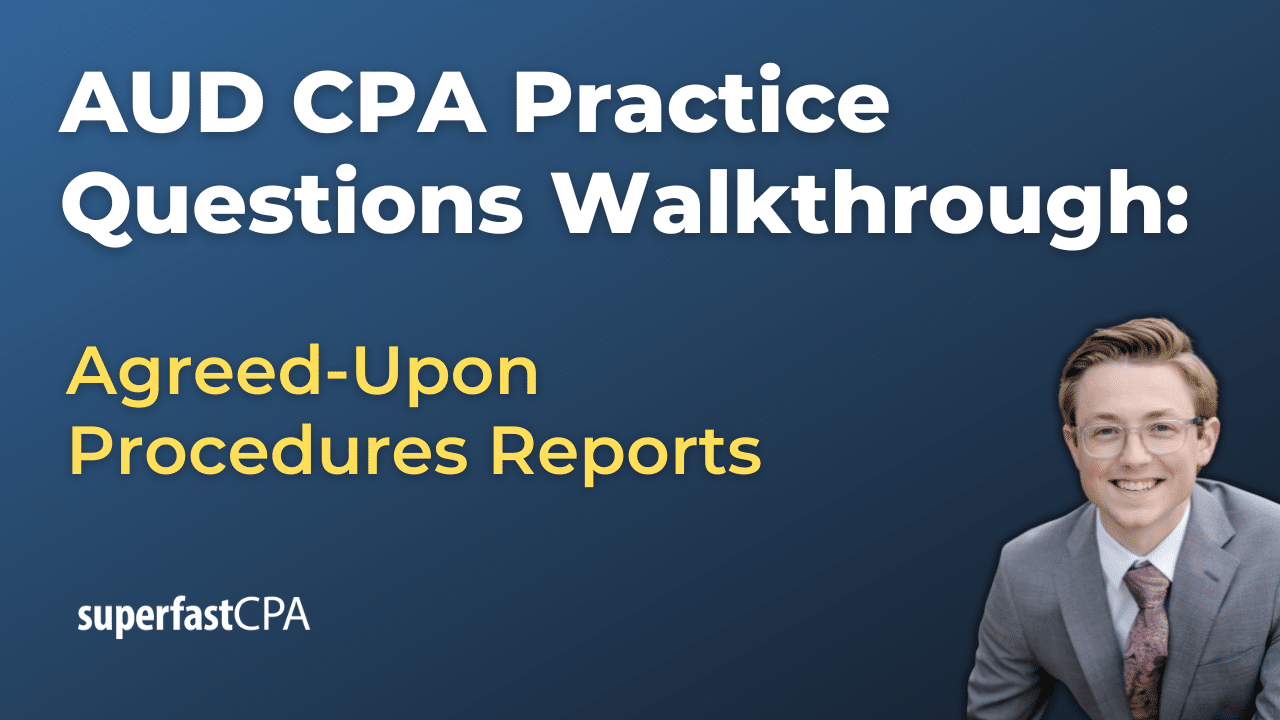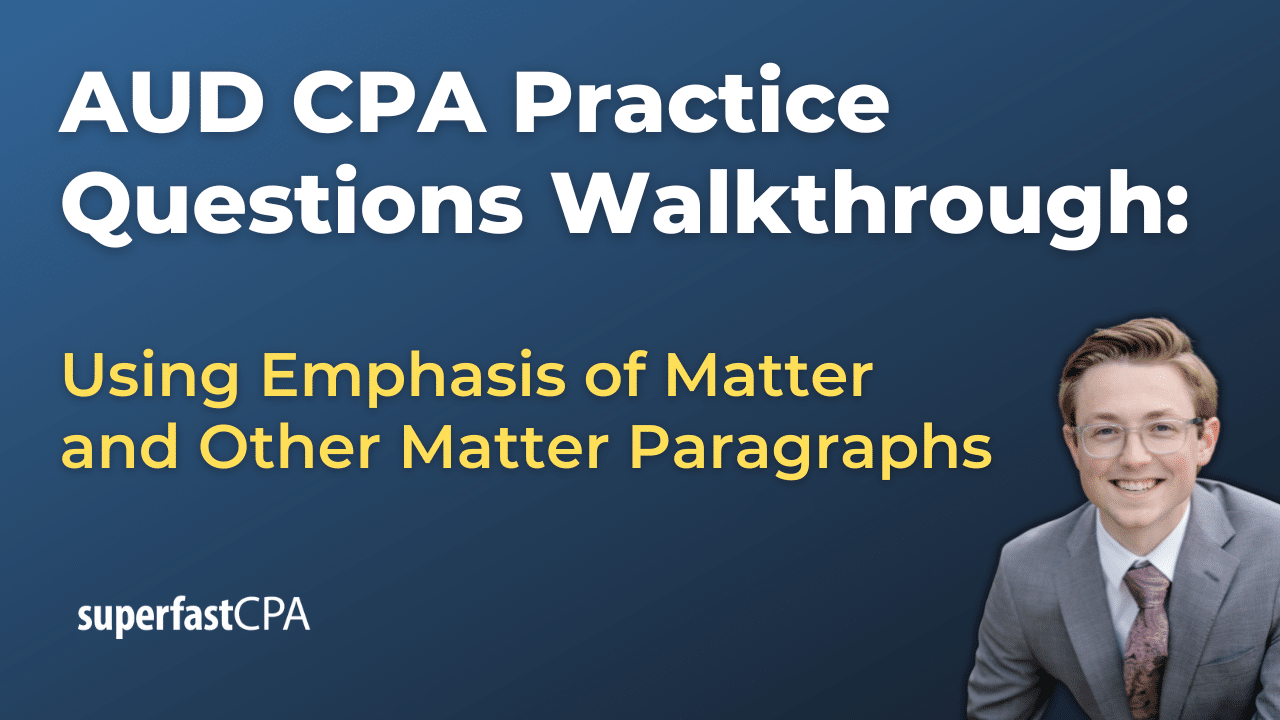Introduction
Overview of the Government Accountability Office (GAO) and Its Role
In this article, we’ll cover identifying the requirements under GAO audits related to internal controls over financial reporting and compliance affecting the financial statements. The Government Accountability Office (GAO) serves as an independent, non-partisan agency that supports the U.S. Congress. Known as the “congressional watchdog,” the GAO’s core mission is to ensure that public funds are utilized efficiently, effectively, and in full compliance with the law. Through audits, evaluations, and investigations, the GAO provides Congress with objective insights aimed at improving the performance and accountability of federal government operations. In carrying out this mission, the GAO establishes audit standards for government entities and programs, which are encapsulated in the Government Auditing Standards.
Introduction to the Government Auditing Standards (Yellow Book)
The Government Auditing Standards, often referred to as the “Yellow Book,” are issued by the GAO to establish a framework for conducting high-quality audits characterized by competence, integrity, objectivity, and independence. These standards are applicable to auditors of government entities, programs, activities, and functions, as well as entities receiving government awards. The Yellow Book provides comprehensive guidelines and requirements for auditors to follow when evaluating and reporting on the financial condition, operations, and compliance of government entities. The standards emphasize the critical importance of transparency, accountability, and public trust in government financial practices.
Importance of Understanding Internal Control Over Financial Reporting and Compliance in Governmental Audits
Internal control over financial reporting (ICFR) and compliance with laws, regulations, contracts, and grant agreements are pivotal elements in governmental audits. ICFR encompasses the processes and procedures an organization implements to ensure the reliability of financial reporting, the effectiveness and efficiency of operations, and adherence to applicable laws and regulations. Robust internal controls are essential for preventing and detecting fraud, errors, and misstatements in financial statements.
In the realm of governmental audits, a deep understanding of and focus on internal control is critical, as it significantly influences the auditor’s ability to form an opinion on financial statements and compliance with applicable laws. Compliance with laws, regulations, contracts, and grant agreements is of equal importance because any noncompliance can lead to severe financial penalties, loss of funding, and damage to the entity’s credibility.
Auditors must rigorously evaluate an entity’s ICFR and compliance practices to identify any deficiencies or noncompliance issues that could materially affect the financial statements. Reporting these findings is a fundamental responsibility under the Yellow Book, ensuring that government entities are held accountable for their financial conduct and legal adherence. For those preparing for the CPA exam, mastering these concepts is crucial, particularly in the AUD section where governmental auditing is a key focus.
Overview of Government Auditing Standards (Yellow Book)
Explanation of the Purpose and Scope of the Yellow Book
The Government Auditing Standards, commonly known as the Yellow Book, are issued by the Government Accountability Office (GAO) to provide a robust framework for conducting audits of government entities, programs, activities, and functions. The primary purpose of the Yellow Book is to ensure that audits are performed with the highest standards of integrity, accountability, and transparency. These standards are essential for promoting public trust in government financial practices.
The scope of the Yellow Book extends to all audits that involve government entities or recipients of government funds. This includes financial audits, attestation engagements, and performance audits. The standards outlined in the Yellow Book are designed to guide auditors in assessing the accuracy and completeness of financial statements, evaluating compliance with applicable laws and regulations, and determining the effectiveness and efficiency of government operations. The Yellow Book applies not only to federal audits but also to state and local governments and other organizations that receive government funding.
Key Principles of the Yellow Book Related to Internal Control and Compliance
The Yellow Book emphasizes several key principles related to internal control and compliance that auditors must adhere to during their engagements:
- Integrity and Objectivity: Auditors are required to maintain a high level of integrity and objectivity throughout the audit process. This includes being free from conflicts of interest and ensuring that their findings and conclusions are based on sufficient, appropriate evidence.
- Independence: The Yellow Book requires auditors to be independent both in mind and appearance. Independence is crucial for ensuring that the audit results are credible and unbiased. Auditors must avoid situations that could impair their independence, such as financial or personal relationships with the entity being audited.
- Professional Judgment and Competence: Auditors must apply professional judgment in planning and conducting audits, making decisions based on a thorough understanding of the relevant standards and the specific circumstances of the engagement. They are also required to possess the necessary technical knowledge and skills to perform the audit effectively.
- Quality Control and Assurance: The Yellow Book mandates that audit organizations establish and maintain a system of quality control that ensures compliance with professional standards and legal requirements. This system should include policies and procedures for monitoring the quality of audits and for addressing any deficiencies that are identified.
- Internal Control Over Financial Reporting (ICFR): The Yellow Book highlights the importance of evaluating internal control systems as part of the audit process. Auditors are required to assess the design, implementation, and operating effectiveness of an entity’s internal controls over financial reporting. This evaluation helps auditors identify any weaknesses or deficiencies that could lead to material misstatements in the financial statements.
- Compliance with Laws, Regulations, Contracts, and Grant Agreements: Compliance is a fundamental aspect of government auditing. The Yellow Book requires auditors to evaluate whether the audited entity has complied with applicable laws, regulations, contracts, and grant agreements. Auditors must assess the risk of noncompliance and design audit procedures to detect any instances of noncompliance that could have a material effect on the financial statements.
By adhering to these principles, auditors can provide assurance that government entities are operating in accordance with established standards and are accountable for their financial management and compliance with the law. Understanding these principles is essential for CPA candidates preparing for the AUD exam, particularly in areas related to governmental audits.
Internal Control Over Financial Reporting (ICFR)
Definition and Importance of ICFR in Government Audits
Internal Control Over Financial Reporting (ICFR) refers to the processes and procedures put in place by an organization to ensure the accuracy, reliability, and timeliness of its financial reporting. In the context of government audits, ICFR plays a crucial role in maintaining the integrity of financial statements, ensuring compliance with applicable laws and regulations, and safeguarding public resources.
The importance of ICFR in government audits cannot be overstated. Effective internal controls help prevent and detect errors, fraud, and misstatements in financial statements, which is essential for ensuring that government entities operate transparently and accountably. Inadequate or ineffective internal controls can lead to significant financial losses, legal penalties, and a loss of public trust. Therefore, auditors must thoroughly evaluate an entity’s ICFR to provide assurance that financial statements are free from material misstatements and that the entity is in compliance with relevant laws and regulations.
GAO Requirements for Auditors Regarding ICFR
The Government Accountability Office (GAO) outlines specific requirements for auditors in evaluating ICFR within the Government Auditing Standards (Yellow Book). These requirements ensure that auditors approach ICFR assessments with rigor and objectivity, providing reliable and credible results.
Key GAO requirements for auditors regarding ICFR include:
- Risk Assessment: Auditors are required to assess the risks associated with an entity’s financial reporting processes. This includes identifying areas where there is a higher likelihood of misstatements or noncompliance due to weak internal controls.
- Evaluation of Control Design and Implementation: Auditors must evaluate whether the design of the internal controls is adequate to address identified risks and whether these controls have been properly implemented. This involves reviewing the entity’s policies and procedures to ensure they are designed effectively to mitigate risks.
- Testing Operating Effectiveness: Beyond assessing the design and implementation, auditors are also required to test the operating effectiveness of ICFR. This means determining whether the internal controls are functioning as intended over a period of time, and whether they effectively prevent or detect material misstatements in financial reporting.
- Reporting Deficiencies: If auditors identify deficiencies in the design, implementation, or operation of internal controls, they are required to report these deficiencies to the appropriate level of management and, when necessary, to those charged with governance. Significant deficiencies and material weaknesses must also be included in the auditor’s report.
Procedures for Evaluating the Design, Implementation, and Operating Effectiveness of ICFR
To evaluate the design, implementation, and operating effectiveness of ICFR, auditors typically follow a systematic process that includes the following steps:
- Understanding the Entity’s Control Environment: Auditors start by gaining an understanding of the entity’s overall control environment, including its organizational structure, control culture, and the tone set by management. This provides a context for assessing specific controls.
- Identifying Key Controls: Auditors identify the key controls that are most critical to preventing or detecting material misstatements in financial reporting. These controls are typically associated with high-risk areas identified during the risk assessment phase.
- Evaluating Control Design: Auditors assess whether the identified key controls are appropriately designed to address the risks associated with financial reporting. This involves reviewing the policies, procedures, and documentation related to the controls.
- Testing Control Implementation: Once the design is evaluated, auditors test whether the controls have been implemented as designed. This can include walkthroughs of processes, interviews with personnel, and reviews of relevant documentation.
- Testing Operating Effectiveness: Auditors perform tests to determine whether the controls are operating effectively over a specific period. This involves selecting a sample of transactions or activities and evaluating whether the controls functioned as intended.
- Assessing Control Deficiencies: If deficiencies are identified during testing, auditors assess the severity of these deficiencies, determining whether they constitute a significant deficiency or material weakness that should be reported.
Documentation Requirements for Auditors Regarding ICFR Assessments
Proper documentation is a critical component of the ICFR evaluation process, as it provides evidence of the auditor’s work and supports the conclusions reached during the audit. The GAO’s Yellow Book requires auditors to maintain comprehensive documentation that includes:
- Risk Assessments: Auditors must document their risk assessments, including the identification of significant risks and the rationale for selecting key controls for testing.
- Control Evaluations: Detailed documentation of the design and implementation evaluations is required, including descriptions of the controls tested and the procedures used to assess their effectiveness.
- Testing Procedures: Auditors must document the specific testing procedures performed, including the sample size, selection criteria, and the results of the tests. This documentation should clearly indicate whether the controls were operating effectively.
- Deficiency Findings: Any deficiencies identified during the ICFR assessment must be thoroughly documented, including the nature of the deficiency, its potential impact on financial reporting, and the auditor’s evaluation of its significance.
- Communication of Results: Documentation should include evidence of the communication of control deficiencies to management and those charged with governance, as well as any corrective actions taken by the entity.
By adhering to these documentation requirements, auditors ensure that their assessments of ICFR are well-supported and that their findings can withstand scrutiny. This level of thoroughness is essential for auditors to fulfill their responsibilities under the Yellow Book and for ensuring the reliability of government financial reporting.
Compliance with Provisions of Laws, Regulations, Contracts, and Grant Agreements
Overview of Compliance Requirements Under the Yellow Book
The Government Auditing Standards, commonly referred to as the Yellow Book, set forth stringent requirements for auditors to assess and report on compliance with laws, regulations, contracts, and grant agreements. Compliance auditing is a critical component of governmental audits because it ensures that entities are operating within the legal and regulatory frameworks that govern their activities. The Yellow Book mandates that auditors evaluate an entity’s adherence to these provisions as part of their overall audit responsibilities, particularly when noncompliance could have a material impact on the financial statements.
The compliance requirements under the Yellow Book are designed to provide reasonable assurance that government entities and recipients of government funds are conducting their operations legally and ethically. Auditors are responsible for identifying the specific provisions applicable to the audited entity and for designing audit procedures to detect any instances of noncompliance. If noncompliance is identified, auditors must assess its significance and report it accordingly.
Types of Provisions That Must Be Considered
In conducting a compliance audit, auditors must consider various types of provisions that govern the entity’s operations. These provisions can be broadly categorized into three main areas:
Laws and Regulations
Laws and regulations refer to the statutory and regulatory requirements that government entities and their programs must follow. These can include federal, state, and local laws that apply to the entity’s activities. For example, an entity may be subject to specific environmental regulations, labor laws, or tax laws, depending on its operations. Auditors are required to identify the relevant laws and regulations that could materially affect the financial statements and design audit procedures to test the entity’s compliance with these requirements.
Contracts and Grant Agreements
Contracts and grant agreements involve the terms and conditions that entities must adhere to when they enter into agreements with other parties, including government agencies, vendors, or private organizations. These agreements often contain specific compliance requirements related to the use of funds, performance expectations, and reporting obligations. Auditors must review these agreements to determine the compliance requirements that are material to the audit and assess whether the entity has met its contractual and grant-related obligations.
Federal Awards
Federal awards encompass financial assistance provided by federal agencies to entities, such as grants, loans, or cooperative agreements. These awards typically come with detailed requirements regarding the use of funds, eligibility, cost principles, and reporting. The Single Audit Act and the Uniform Guidance (2 CFR Part 200) provide specific compliance requirements for federal awards, which auditors must evaluate. Noncompliance with federal award requirements can lead to significant financial penalties and loss of future funding, making this area a critical focus in compliance audits.
Procedures for Assessing Compliance and Identifying Noncompliance
To assess compliance and identify potential noncompliance, auditors follow a structured approach that includes the following procedures:
- Understanding the Entity’s Compliance Environment: Auditors begin by gaining an understanding of the entity’s overall compliance environment, including its policies, procedures, and controls related to compliance. This helps auditors identify the specific provisions that apply to the entity and assess the risk of noncompliance.
- Identifying Applicable Provisions: Auditors must identify the specific laws, regulations, contracts, and grant agreements that apply to the entity’s operations. This involves reviewing relevant documents, such as legal agreements, regulatory filings, and grant award documents, to determine the compliance requirements.
- Designing Compliance Tests: Based on the identified provisions, auditors design tests to assess the entity’s compliance. These tests may include reviewing records, inspecting documents, conducting interviews, and performing walkthroughs to determine whether the entity is adhering to the applicable requirements.
- Evaluating Compliance Results: Auditors evaluate the results of their compliance tests to determine whether the entity is in compliance with the applicable provisions. If instances of noncompliance are identified, auditors assess their significance and determine whether they could have a material impact on the financial statements.
- Reporting Noncompliance: When noncompliance is identified, auditors must report it to the appropriate level of management and, when necessary, include it in the audit report. Significant noncompliance that has a material effect on the financial statements must be communicated to those charged with governance and may require corrective action by the entity.
Materiality Considerations in the Context of Compliance
Materiality is a key consideration in compliance audits, as it determines the significance of noncompliance in relation to the financial statements. In the context of compliance, materiality is assessed based on the potential impact of noncompliance on the financial position, results of operations, or cash flows of the entity.
Auditors must evaluate whether instances of noncompliance are material, taking into account both quantitative and qualitative factors. For example, noncompliance with a law or regulation that results in a significant financial penalty or loss of funding would be considered material. Similarly, noncompliance that affects the entity’s ability to continue its operations or that undermines public trust in the entity’s management could also be deemed material.
When assessing materiality in compliance audits, auditors must consider the cumulative effect of multiple instances of noncompliance, even if each instance individually might not be material. The Yellow Book emphasizes the importance of exercising professional judgment in determining materiality and in deciding how to report noncompliance findings.
By rigorously assessing compliance with relevant provisions and carefully considering materiality, auditors provide valuable assurance that government entities are operating within the bounds of the law and that their financial statements are free from material misstatements due to noncompliance. This ensures accountability and transparency in the management of public resources, which is essential for maintaining public trust in government operations.
Reporting Requirements
Overview of the Reporting Requirements Under the Yellow Book
The Government Auditing Standards, commonly referred to as the Yellow Book, establish specific requirements for auditors to follow when reporting on their audit findings. These standards ensure that audit reports provide a clear and comprehensive account of the auditor’s evaluation of the entity’s financial statements, internal controls, and compliance with applicable laws and regulations. The reporting requirements under the Yellow Book are designed to enhance transparency and accountability in government operations by ensuring that significant issues related to internal control and compliance are communicated to those charged with governance, as well as to the public.
Reporting on Internal Control Over Financial Reporting (ICFR)
Requirements for Including ICFR Findings in the Audit Report
When conducting a government audit, auditors are required to assess and report on the effectiveness of the entity’s internal control over financial reporting (ICFR). The Yellow Book mandates that any findings related to ICFR be included in the audit report, particularly if they involve deficiencies that could result in material misstatements in the financial statements. The audit report should clearly describe the nature of the ICFR findings, the potential impact on the financial statements, and any recommendations for corrective action.
Communication of Deficiencies, Material Weaknesses, and Significant Deficiencies
In the context of ICFR, the Yellow Book distinguishes between deficiencies, significant deficiencies, and material weaknesses, each of which must be communicated in the audit report:
- Deficiencies: A deficiency in ICFR exists when the design or operation of a control does not allow management or employees, in the normal course of performing their assigned functions, to prevent or detect and correct misstatements on a timely basis. While not necessarily severe, deficiencies should still be communicated to management to encourage improvement.
- Significant Deficiencies: A significant deficiency is a deficiency, or a combination of deficiencies, in ICFR that is less severe than a material weakness, yet important enough to merit attention by those charged with governance. Significant deficiencies must be reported to management and those charged with governance, and included in the audit report.
- Material Weaknesses: A material weakness is a deficiency, or combination of deficiencies, in ICFR such that there is a reasonable possibility that a material misstatement of the entity’s financial statements will not be prevented, or detected and corrected, on a timely basis. Material weaknesses are the most serious type of ICFR deficiency and must be clearly communicated in the audit report, along with the auditor’s assessment of their impact on the financial statements.
Reporting on Compliance
When and How to Report Instances of Noncompliance
The Yellow Book requires auditors to assess the entity’s compliance with applicable laws, regulations, contracts, and grant agreements. When instances of noncompliance are identified, auditors must determine whether these instances are material to the financial statements. Noncompliance that could have a material impact on the financial statements must be reported in the audit report.
The audit report should include a description of the nature and extent of the noncompliance, the potential impact on the entity’s financial position, and any corrective actions recommended by the auditor. If the noncompliance is not material, but still significant, it should be communicated to management and those charged with governance, but may not need to be included in the audit report.
Requirements for Including Compliance Findings in the Audit Report
Compliance findings that are deemed material must be included in the audit report. The report should provide a detailed account of the noncompliance, including the specific laws, regulations, contracts, or grant agreements that were violated, the circumstances leading to the noncompliance, and the potential financial consequences for the entity. The auditor should also include recommendations for corrective action to address the noncompliance and prevent future occurrences.
Communicating Noncompliance That Has a Material Effect on the Financial Statements
When noncompliance is identified that has a material effect on the financial statements, it must be prominently reported in the audit report. This includes noncompliance that could lead to significant financial penalties, loss of funding, or other adverse consequences for the entity. The audit report should explain the nature of the noncompliance, its financial impact, and any steps the entity is taking to address the issue. Additionally, the auditor may need to issue a qualified or adverse opinion on the financial statements if the noncompliance is severe enough to undermine the overall reliability of the financial reporting.
Examples of Audit Reports with ICFR and Compliance Findings
To illustrate how ICFR and compliance findings are reported under the Yellow Book, consider the following examples:
- Example of a Material Weakness in ICFR:
- Finding: The auditor identifies a material weakness in the entity’s cash reconciliation process, where significant discrepancies are not identified or corrected in a timely manner.
- Audit Report Inclusion: The audit report includes a detailed description of the material weakness, its impact on the financial statements, and recommendations for improving the cash reconciliation process. The report also notes that this weakness could lead to material misstatements if not addressed.
- Example of Significant Noncompliance with Grant Agreements:
- Finding: The auditor discovers that the entity has not complied with certain provisions of a federal grant agreement, resulting in unauthorized expenditures that could lead to a repayment obligation.
- Audit Report Inclusion: The audit report includes a description of the noncompliance, the specific provisions violated, the financial impact of the unauthorized expenditures, and recommendations for corrective action. The report emphasizes the potential risk of losing future grant funding if compliance is not restored.
- Example of Non-Material Compliance Issue:
- Finding: The auditor finds a minor instance of noncompliance with state procurement regulations that did not result in significant financial loss or misstatement.
- Audit Report Inclusion: While this finding is communicated to management, it is not included in the audit report because it is not material to the financial statements. However, the auditor may recommend procedural improvements to ensure future compliance.
These examples demonstrate how auditors apply the Yellow Book standards in practice, ensuring that government entities are held accountable for their internal controls and compliance with legal requirements. By including these findings in the audit report, auditors help promote transparency, accountability, and effective governance in the public sector.
Special Considerations in Government Audits
Interaction with Other Auditing Standards
Government audits often require the application of multiple auditing standards, particularly when federal funds are involved. One key standard that interacts with the Government Auditing Standards (Yellow Book) is the Single Audit Act, which applies to entities that expend $750,000 or more in federal awards in a fiscal year. The Single Audit Act mandates a comprehensive audit that combines both a financial audit and a compliance audit of federal awards. Auditors conducting these audits must adhere not only to the Yellow Book but also to the Uniform Guidance (2 CFR Part 200), which sets forth the specific audit requirements for federal awards.
This interaction necessitates a thorough understanding of both sets of standards. Auditors must ensure that their work complies with the requirements of the Single Audit Act while also adhering to the broader principles and guidelines established by the Yellow Book. This includes conducting risk assessments, evaluating internal controls, and testing for compliance with federal program requirements, all while maintaining the high standards of objectivity, independence, and transparency outlined in the Yellow Book.
Coordination with Other Auditors and Audit Organizations
Government audits often involve multiple auditors or audit organizations, particularly in cases where an entity receives funding from various federal, state, and local sources. Coordination among these auditors is crucial to ensure that all aspects of the audit are adequately covered and that findings are consistently reported.
The Yellow Book emphasizes the importance of effective communication and collaboration among auditors. This coordination may include sharing information about audit plans, risk assessments, and findings. When auditors from different organizations are involved in the audit of a single entity, they must work together to avoid duplication of effort, ensure comprehensive coverage of all audit areas, and address any discrepancies in their findings.
Additionally, auditors may need to coordinate with other oversight bodies, such as federal agencies, state audit offices, and inspector general offices, to ensure that their work aligns with broader accountability and oversight objectives. This collaboration helps to maintain the integrity and efficiency of the audit process, ultimately leading to more reliable and actionable audit reports.
Consideration of Fraud Risk in the Context of Internal Control and Compliance
Fraud risk is a significant concern in government audits, given the potential for misuse of public funds and the high level of scrutiny on government operations. The Yellow Book requires auditors to consider the risk of fraud when assessing internal controls and compliance with laws and regulations. This includes evaluating the potential for fraudulent financial reporting, misappropriation of assets, and corruption.
Auditors must design their audit procedures to identify and assess fraud risk factors, such as incentives or pressures on management, opportunities for fraud to occur, and attitudes or rationalizations that could justify fraudulent behavior. When evaluating internal controls, auditors should consider whether these controls are effective in preventing, detecting, and responding to potential fraud.
In the context of compliance, auditors must also assess whether the entity has established adequate procedures to ensure compliance with laws and regulations and whether there are any red flags that might indicate noncompliance due to fraudulent activity. If fraud is suspected or detected, auditors are required to report their findings to the appropriate level of management and, if necessary, to those charged with governance or oversight authorities.
By carefully considering fraud risk in their audits, auditors help safeguard public resources and ensure that government entities are operating in an ethical and transparent manner. This consideration is essential for maintaining public trust and ensuring the effectiveness of government programs and operations.
Practical Applications and Examples
Case Studies or Hypothetical Scenarios Demonstrating the Application of GAO Standards
Understanding the application of Government Accountability Office (GAO) standards in real-world situations is essential for grasping their practical implications. Below are hypothetical scenarios that illustrate how these standards are applied in government audits:
Scenario 1: Evaluating Internal Control Over Financial Reporting
Background: A state agency responsible for administering unemployment benefits is undergoing an audit. The agency has experienced a significant increase in unemployment claims due to economic downturns, and there are concerns about the effectiveness of its internal controls over financial reporting (ICFR).
Application of GAO Standards: The auditors begin by assessing the agency’s control environment, focusing on how management has adapted controls to handle the increased volume of claims. They evaluate whether the existing controls are adequately designed to prevent and detect errors or fraud in the financial reporting process. During the audit, the auditors identify that the agency’s reconciliation process for payments made to claimants is not functioning as intended, leading to discrepancies in reported expenditures.
Outcome: The auditors report this as a significant deficiency in the audit report, recommending that the agency improve its reconciliation process to ensure accurate financial reporting. The scenario demonstrates the importance of thorough ICFR evaluation under GAO standards, especially in high-risk environments.
Scenario 2: Assessing Compliance with Federal Grant Agreements
Background: A local government has received a federal grant to fund infrastructure improvements. The grant agreement specifies that the funds must be used exclusively for road repair and that the government must submit quarterly financial reports detailing the use of the funds.
Application of GAO Standards: The auditors review the local government’s financial records and quarterly reports to assess compliance with the grant agreement. They discover that a portion of the funds was used for unrelated expenses, such as equipment purchases for a different department. Additionally, the financial reports were submitted late, violating the terms of the grant agreement.
Outcome: The auditors report the noncompliance in their audit findings, highlighting the misuse of grant funds and the late reporting as material issues. They recommend that the local government establish stricter controls over grant fund usage and improve its reporting processes. This scenario underscores the critical role of compliance auditing in ensuring that government entities adhere to the terms of federal grants.
Examples of Common Deficiencies in ICFR and Compliance in Government Audits
In government audits, certain deficiencies in internal control over financial reporting (ICFR) and compliance with laws, regulations, contracts, and grant agreements are commonly observed. Understanding these deficiencies can help auditors anticipate and address issues more effectively.
Common ICFR Deficiencies:
- Inadequate Segregation of Duties: In many government entities, a lack of sufficient personnel can lead to inadequate segregation of duties. This means that the same individual may be responsible for multiple stages of a transaction process, such as authorization, record-keeping, and reconciliation. This deficiency increases the risk of errors and fraud.
- Weak Reconciliation Processes: Reconciliation of accounts, such as cash accounts or grant fund accounts, is a critical internal control. A common deficiency is the failure to perform timely and accurate reconciliations, which can result in undetected discrepancies and misstatements in the financial statements.
- Insufficient Documentation: Another frequent ICFR issue is the lack of adequate documentation to support financial transactions. This deficiency can lead to difficulties in verifying the accuracy and completeness of financial records, and it hampers the auditor’s ability to assess the effectiveness of internal controls.
Common Compliance Deficiencies:
- Misuse of Grant Funds: A frequent compliance issue is the use of federal or state grant funds for purposes not authorized by the grant agreement. This noncompliance can result in financial penalties, required repayment of funds, and loss of future funding opportunities.
- Late or Inaccurate Reporting: Government entities are often required to submit regular financial and performance reports to grantors or oversight bodies. Common deficiencies include submitting reports late, providing inaccurate data, or failing to report at all, which can jeopardize the entity’s standing with grantors and other stakeholders.
- Noncompliance with Procurement Regulations: Government entities must follow strict procurement regulations when acquiring goods and services. A common deficiency is the failure to adhere to these regulations, such as not conducting a competitive bidding process or not obtaining necessary approvals, leading to potential legal challenges and financial losses.
By recognizing these common deficiencies and applying the appropriate GAO standards, auditors can help government entities strengthen their internal controls and ensure compliance with applicable laws and regulations. These practical applications and examples provide a clear understanding of how GAO standards are implemented in real-world audits, reinforcing their importance in maintaining the integrity and accountability of government operations.
Conclusion
Recap of the Key Points Covered in the Article
In this article, we explored the critical aspects of government audits as guided by the Government Accountability Office (GAO) standards, commonly known as the Yellow Book. We began by discussing the role of the GAO and the purpose and scope of the Yellow Book, emphasizing its importance in promoting transparency, accountability, and integrity in government operations. We then delved into the evaluation of Internal Control Over Financial Reporting (ICFR), highlighting the procedures for assessing the design, implementation, and operating effectiveness of internal controls.
We also examined the compliance requirements under the Yellow Book, focusing on the types of provisions auditors must consider, including laws, regulations, contracts, and grant agreements. The article covered the procedures for assessing compliance, identifying noncompliance, and the significance of materiality in this context. We further discussed the reporting requirements for ICFR and compliance findings, providing examples to illustrate how these findings should be communicated in audit reports.
Additionally, we touched on special considerations in government audits, such as the interaction with other auditing standards, coordination with other auditors, and the assessment of fraud risk. Finally, we presented practical applications and examples to demonstrate how GAO standards are applied in real-world scenarios, including common deficiencies found in ICFR and compliance audits.
The Importance of Adherence to GAO Standards for Ensuring the Integrity of Government Audits
Adherence to GAO standards is crucial for maintaining the integrity, reliability, and credibility of government audits. These standards ensure that audits are conducted with a high level of professionalism, objectivity, and independence, which are essential for safeguarding public resources and fostering public trust in government entities. By following the guidelines set forth in the Yellow Book, auditors can effectively evaluate internal controls, assess compliance with applicable laws and regulations, and report their findings transparently.
Compliance with GAO standards also helps auditors identify and address potential risks, including fraud and noncompliance, thereby contributing to the overall accountability and efficiency of government operations. For auditors and CPA candidates, a thorough understanding of these standards is not only necessary for conducting effective audits but also for upholding the principles of ethical and responsible governance.
Encouragement for Further Study and Review of the Yellow Book for CPA Exam Success
For CPA candidates preparing for the AUD exam, a solid grasp of the GAO’s Government Auditing Standards is essential. The Yellow Book provides the foundational knowledge needed to understand the complexities of government audits, and its principles are frequently tested in the CPA exam. To succeed, candidates should dedicate time to studying the Yellow Book, paying particular attention to its guidance on internal control, compliance, and reporting requirements.
Engaging in further study and review of the Yellow Book will not only enhance your exam preparation but also equip you with the skills and knowledge needed to excel in your professional career. By mastering these standards, you will be well-prepared to contribute to the field of government auditing and to ensure the integrity and accountability of the entities you audit.














